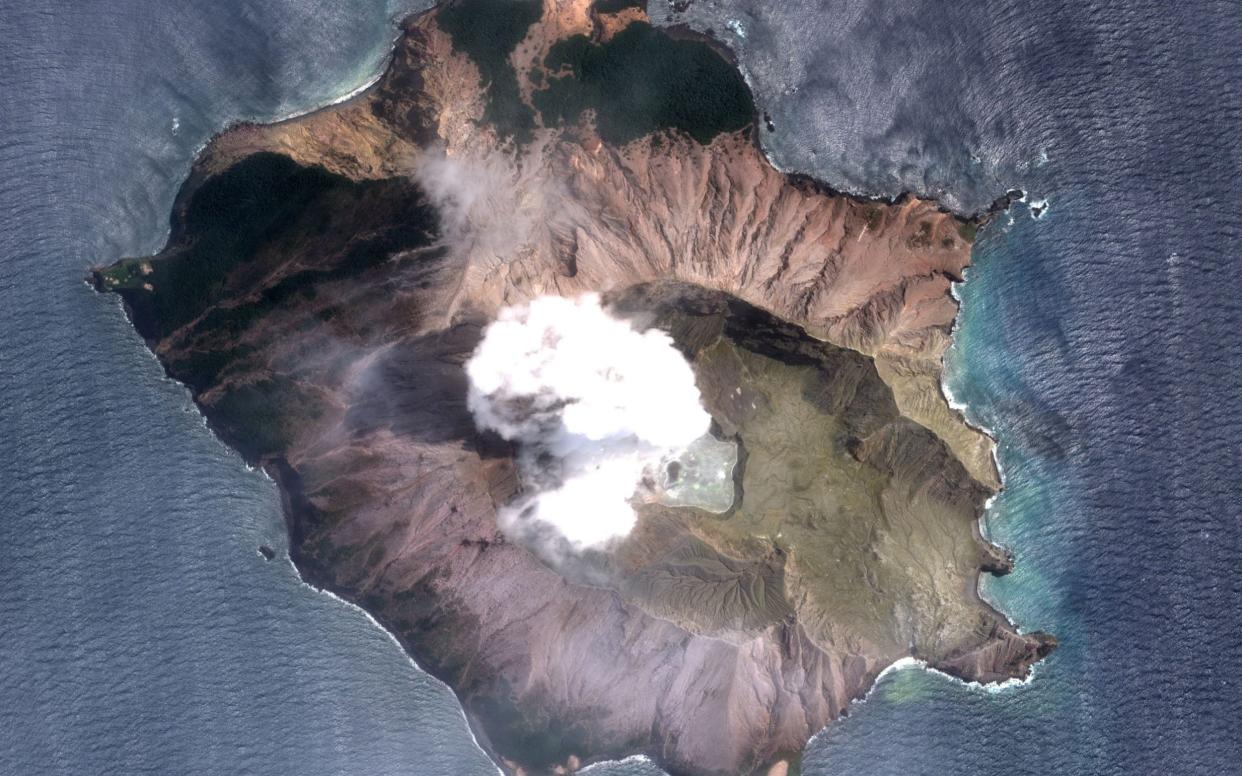New Zealand volcano: plan for dangerous mission to recover bodies despite eruption risk

New Zealand's military were due to launch a mission to recover the bodies of tourists and guides killed by a volcano on Friday, despite scientists warning of another possible eruption.
New Zealand Police Deputy Commission Mike Clement said New Zealand Defence Force troops will begin an operation to recover bodies from Whakaari/White Island at first light with a joint team involving police and local search and rescue authorities.
Six bodies of the eight suspected dead remaining on the island have been spotted by reconnaissance drones. Authorities plan to transport the bodies to NZDF frigate HMNZS Wellington and then to the mainland. There are nine people missing, eight believed to be on the island. Once the bodies are recovered the confirmed death toll may rise to 17.
GNS scientists will monitor the volcano and work closely with the NZDF and others during the mission. But the threat level has already been heightened this week following the initial deadly eruption.
“The risk is not gone. It remains present… If the plan is going to work it is subject to things beyond out control. A lot has to go right for this to work," Mr Clement said.
The mission comes as pressure mounted on authorities to assist the victims' families. On Thursday the brother of a tour guide who died on the island told TVNZ that “leadership had failed”.
Mark Inman, a helicopter pilot, had written to Prime Minister Jacinda Ardern asking for clearance to enter the no-fly zone and retrieve the body of his brother, Hayden Marshall-Inman. He said it was refused.
Mr Inman told TVNZ that authorities were taking too long to recover bodies which he claimed could be picked up safely by people like himself, who “know the island inside and out”.
“It's not frustration that they can't get to the island, it is more frustration that they haven't gone to the island... There has been two perfect opportunities to get out there and they haven't gone.”
The prime minister conceded that authorities need to do a better job of communicating retrieval efforts.
“I did meet Mark Inman very briefly and his family on Tuesday and my heart goes out to them," she told local media in Christchurch on Thursday. “I can't experience what that experience, that waiting, will feel like for them.”
At a 3.30pm media conference the same day, Graham Leonard of GSN Science said the risk of an eruption in the next 24 hours has increased from 40-60% to 50-60%.
“It is highly volatile and uncertain. There are ongoing tremors, today is less safe than yesterday,” he said.
Mr Leonard shared maps showing the island’s risk zones. The red “no go” zone covered more than half the island. Mr Leonard said “as scientists, we would need a strong reason to go into the yellow zone”, which covered the rest of Whakaari/White Island.
“The police will make their own decisions… We have shared out risk assessments with the police,” he said.
At the same conference, Dr Ashley Bloomfield from the Department of Health said New Zealand has ordered more skin from the United States and also skin from Australia for skin grafts.
He said 21 patients remain in New Zealand burns units, eight of which at the national burns unit. Sixteen of the 21 patients are still in critical condition.
Seven Australians have been returned to Australia in aircraft with intensive care capabilities.
Two young Australian brothers have died as a result of the eruption on Whakaari/White Island, bringing the official death toll to eight.
Berend Hollander, 16, and his brother Matthew, 13, from Sydney, died from their injuries. One was a patient at Middlemore Hospital and one at Waikato Hospital. Their parents remain unaccounted for.

